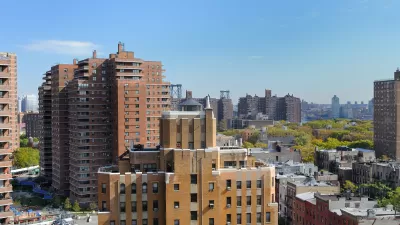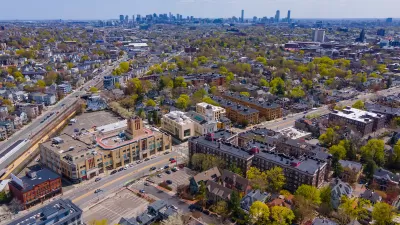The McKinsey Global Institute wants to help California build 3.5 million homes by 2025.

"California will have to build about 3.5 million homes over the next eight years, more than triple its current pace of construction, simply to keep up with expected population growth and hold down housing costs to affordable levels," begins an article by Conor Dougherty and Karl Russell.
That premise introduces the policy recommendations contained in a new report from the McKinsey Global Institute. The "Closing California's housing gap" provides a toolbox to help the state increase housing production in an era of scarcity, constrained by various levels of local controls. "Those ideas include streamlining grants of local permits, and using tax policy to withhold money from anti-growth cities that drag their feet on new housing," according to Dougherty and Russell.
The headlining policy idea, however, is to build on the vacant plots of land in the state's urban areas. The article includes maps of the Los Angeles region and the city of San Francisco, showing the broad swaths of land available to build "225,000 or so homes and apartments."
An article on the McKinsey Global Institute website has more on the methodology and findings of the study:
To understand the nature of the problem, we built a quantitative model to identify California’s housing affordability gap by household and location. To do this, we segmented the state’s more than 12 million households into 34 housing markets and 16 income bands, and assessed each household’s ability to afford housing in their local market. We learned that 50 percent of California’s households cannot afford the cost of housing in their local market. Virtually none of California’s low-income and very-low-income households can afford the local cost of housing.
FULL STORY: No Vacancies in California? Housing Report Begs to Differ

Alabama: Trump Terminates Settlements for Black Communities Harmed By Raw Sewage
Trump deemed the landmark civil rights agreement “illegal DEI and environmental justice policy.”

Planetizen Federal Action Tracker
A weekly monitor of how Trump’s orders and actions are impacting planners and planning in America.

The 120 Year Old Tiny Home Villages That Sheltered San Francisco’s Earthquake Refugees
More than a century ago, San Francisco mobilized to house thousands of residents displaced by the 1906 earthquake. Could their strategy offer a model for the present?

Ken Jennings Launches Transit Web Series
The Jeopardy champ wants you to ride public transit.

BLM To Rescind Public Lands Rule
The change will downgrade conservation, once again putting federal land at risk for mining and other extractive uses.

Indy Neighborhood Group Builds Temporary Multi-Use Path
Community members, aided in part by funding from the city, repurposed a vehicle lane to create a protected bike and pedestrian path for the summer season.
Urban Design for Planners 1: Software Tools
This six-course series explores essential urban design concepts using open source software and equips planners with the tools they need to participate fully in the urban design process.
Planning for Universal Design
Learn the tools for implementing Universal Design in planning regulations.
Clanton & Associates, Inc.
Jessamine County Fiscal Court
Institute for Housing and Urban Development Studies (IHS)
City of Grandview
Harvard GSD Executive Education
Toledo-Lucas County Plan Commissions
Salt Lake City
NYU Wagner Graduate School of Public Service





























